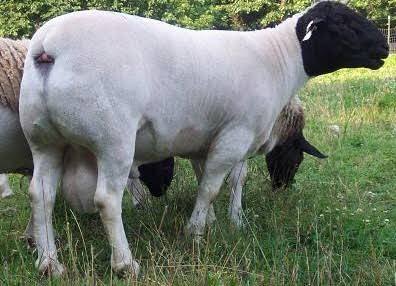Last updated on March 2nd, 2024 at 05:52 pm
Kenya is renowned for its vast agricultural lands and diverse livestock production systems. One of the most popular livestock rearing systems is zero grazing, particularly for sheep. In this article, we will delve into the basics of zero grazing sheep farming in Kenya, its benefits and challenges, and how to set up a zero grazing system.
What is Zero Grazing Sheep Rearing in Kenya?
Zero grazing is a livestock rearing system where animals are confined to a specific area and fed with cut and carry forage. The system is particularly popular in Kenya, where farmers use it to rear dairy cows, goats, and sheep. In zero grazing, the animals are kept in a shed or a barn, and the forage is brought to them.
Benefits of Zero Grazing Sheep Rearing in Kenya
- Efficient use of land: Zero grazing allows farmers to make the most out of their land by confining their animals to a specific area. This ensures that the land is not overgrazed and that the animals have adequate space.
- Controlled feeding: With zero grazing, farmers can control what their animals eat, ensuring that they receive a balanced diet. This is particularly important for sheep, which require a diet that is high in protein.
- Reduced labor: Zero grazing requires less labor compared to other livestock rearing systems. Farmers do not have to spend time herding their animals, which can be time-consuming and inefficient.
- Reduced disease transmission: Zero grazing reduces the risk of disease transmission, as animals are confined to a specific area. This is particularly important in areas where there are outbreaks of livestock diseases.
Challenges of Zero Grazing Sheep Farming in Kenya
- High initial investment: Setting up a zero grazing system can be expensive, particularly if you need to construct a shed or a barn.
- Feed management: Farmers need to ensure that they have enough forage to feed their animals throughout the year. This requires proper feed management and planning.
- Health management: Confined animals are more prone to diseases and infections, so farmers need to be diligent in their health management practices.
- Limited exercise: Zero grazing restricts the movement of animals, which can lead to health problems if not managed properly.
How to Set Up a Zero Grazing Sheep Rearing System in Kenya
- Identify a suitable location: The location should be easily accessible, secure, and have adequate water supply.
- Construct a shed or a barn: The shed should be spacious enough to accommodate your animals comfortably. You should also ensure that it is well-ventilated and has adequate lighting.
- Install a feeding system: You can either use a manual feeding system or an automated one. The feeding system should be easy to use and efficient.
- Plan your feed management: You should have a plan for the amount of forage you need to feed your animals throughout the year.
- Develop a health management plan: You should have a plan for disease prevention and treatment.
Conclusion
Zero grazing sheep rearing in Kenya is a popular and efficient livestock production system that can offer many benefits to farmers. However, it also comes with its fair share of challenges. With proper planning, management, and execution, farmers can successfully set up and run a zero grazing system for sheep.
